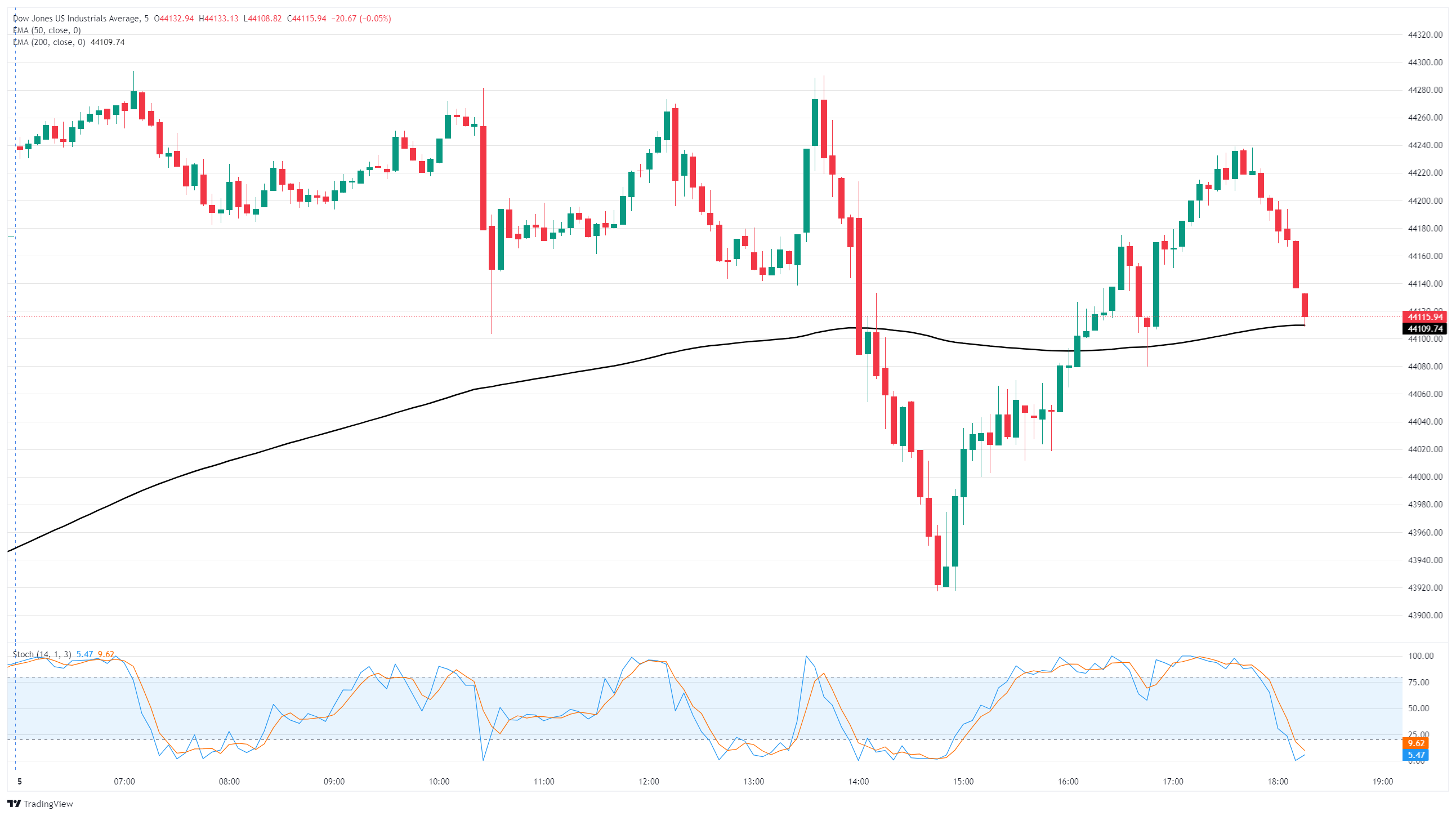Dow Jones Industrial Average grapples with soft PMI print

- The Dow Jones saw early declines on Tuesday after ISM Services PMI figures came in below expectations.
- 44,000 remains a key inflection point for the major equity index.
- US President Donald Trump has fresh tariff threats ahead of his latest trade deal deadline.
The Dow Jones Industrial Average (DJIA) took a hit early Tuesday, declining after United States (US) ISM Purchasing Manager Index (PMI) figures for July came in below expectations, adding further downside pressure to already-battered investor sentiment. US President Donald Trump issued fresh tariff threats on Tuesday, reiterating that he will increase tariffs on the European Union (EU) to 35% across the board if the EU government doesn’t fulfill its “obligations”, likely referring to a loose, preliminary handshake deal between Europe and the US to invest billions of dollars in American business infrastructure at some point in the future.
The Dow Jones fell to an intraday low of 43,917 before recovering its footing and pushing back into the day’s opening level near 44,200. The Dow has recovered from a recent decline that dragged the major equity index down nearly 4% top-to-bottom from record highs at 45,130, catching a technical bounce from the 50-day Exponential Moving Average (EMA) near 43,660. Despite snapping a six-day decline on Monday, the Dow still shows further signs of price action weakness as bulls struggle to muscle bids back over 44,250.
US PMI figures warn of trade and employment weakness
US ISM Services PMI survey results sank to 50.1 in July, flubbing an expected increase to 51.5 from 50.8. Digging deeper into the data, most components of the ISM PMI report were in expansion territory, with the business activity, supplier deliveries, and prices index all showing improvement from the previous month. However, hiring expectations fell into contraction territory, with most businesses placing the blame on seasonal and weather factors. There were also sharp contractions in both new exports and imports activity expectations as tariff impacts continue to creep into US activity data.

Trump on trade: a tumultuous, ever-changing affair
US President Donald Trump reiterated that he would be kicking future EU tariff levels up to 35% if the EU doesn’t fulfill its trade and investment obligations to the US. Specific details, as always, remain limited, and Trump’s timeline on deadlines remains particularly fluid. The makings of a trade agreement between the US and the EU are in the works, but, as with most trade agreements secured by the Trump administration, specific details remain essentially non-existent, and none have been written into effective law by any government at this stage.
After promising steep secondary tariffs earlier this week on India for trading in Russian Crude Oil products, Donald Trump has shifted his focus on Tuesday back to Russia. Rumors that Russia is weighing offering a temporary air-truce offer in order to appease President Trump are in the water supply. However, according to reporting by the Financial Times, the Trump team could be poised to introduce fresh economic sanctions against Russia if Russian President Vladimir Putin doesn’t achieve a complete ceasefire with Ukraine by Friday.
Dow Jones 5-minute chart

Dow Jones daily chart

Dow Jones FAQs
The Dow Jones Industrial Average, one of the oldest stock market indices in the world, is compiled of the 30 most traded stocks in the US. The index is price-weighted rather than weighted by capitalization. It is calculated by summing the prices of the constituent stocks and dividing them by a factor, currently 0.152. The index was founded by Charles Dow, who also founded the Wall Street Journal. In later years it has been criticized for not being broadly representative enough because it only tracks 30 conglomerates, unlike broader indices such as the S&P 500.
Many different factors drive the Dow Jones Industrial Average (DJIA). The aggregate performance of the component companies revealed in quarterly company earnings reports is the main one. US and global macroeconomic data also contributes as it impacts on investor sentiment. The level of interest rates, set by the Federal Reserve (Fed), also influences the DJIA as it affects the cost of credit, on which many corporations are heavily reliant. Therefore, inflation can be a major driver as well as other metrics which impact the Fed decisions.
Dow Theory is a method for identifying the primary trend of the stock market developed by Charles Dow. A key step is to compare the direction of the Dow Jones Industrial Average (DJIA) and the Dow Jones Transportation Average (DJTA) and only follow trends where both are moving in the same direction. Volume is a confirmatory criteria. The theory uses elements of peak and trough analysis. Dow’s theory posits three trend phases: accumulation, when smart money starts buying or selling; public participation, when the wider public joins in; and distribution, when the smart money exits.
There are a number of ways to trade the DJIA. One is to use ETFs which allow investors to trade the DJIA as a single security, rather than having to buy shares in all 30 constituent companies. A leading example is the SPDR Dow Jones Industrial Average ETF (DIA). DJIA futures contracts enable traders to speculate on the future value of the index and Options provide the right, but not the obligation, to buy or sell the index at a predetermined price in the future. Mutual funds enable investors to buy a share of a diversified portfolio of DJIA stocks thus providing exposure to the overall index.







